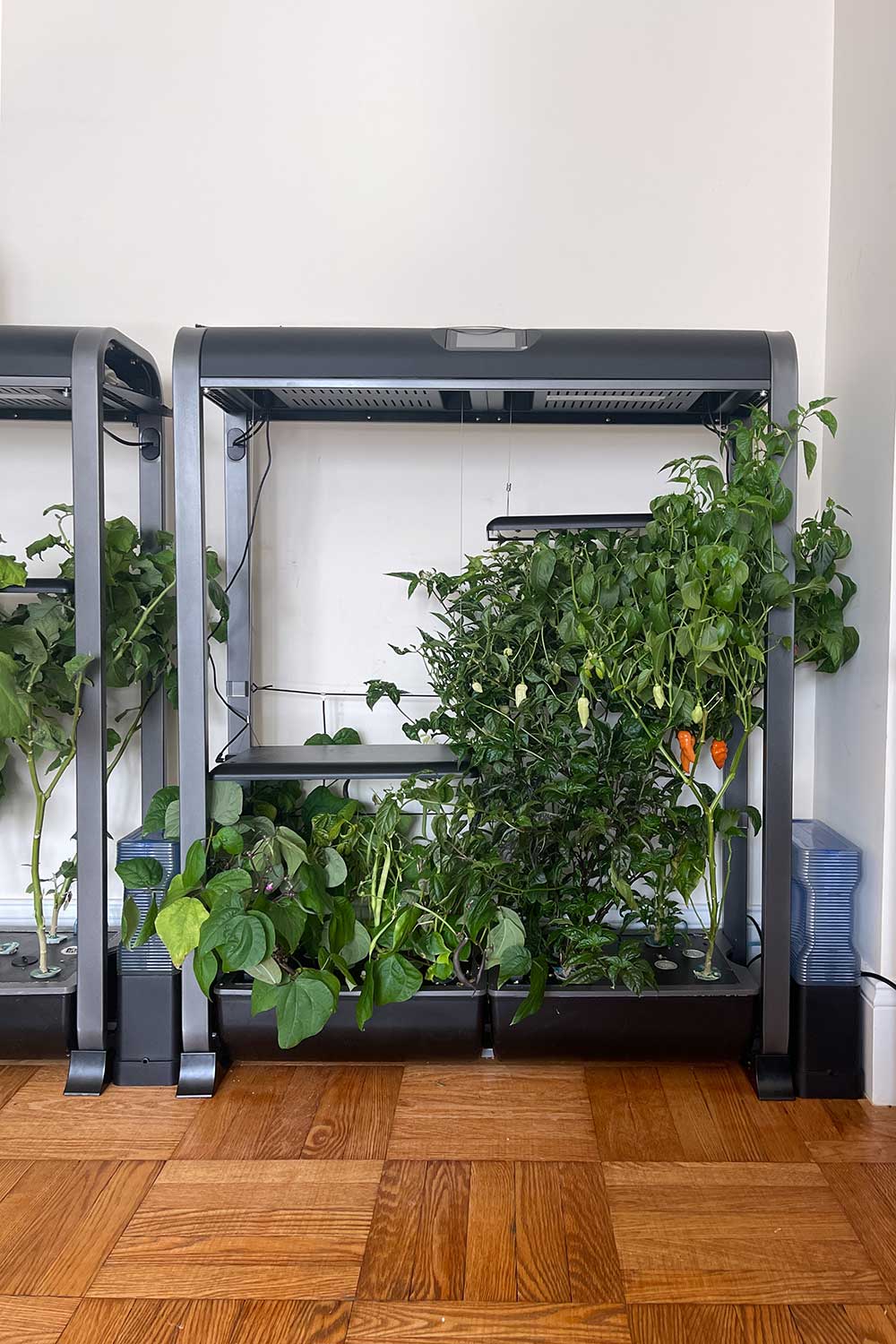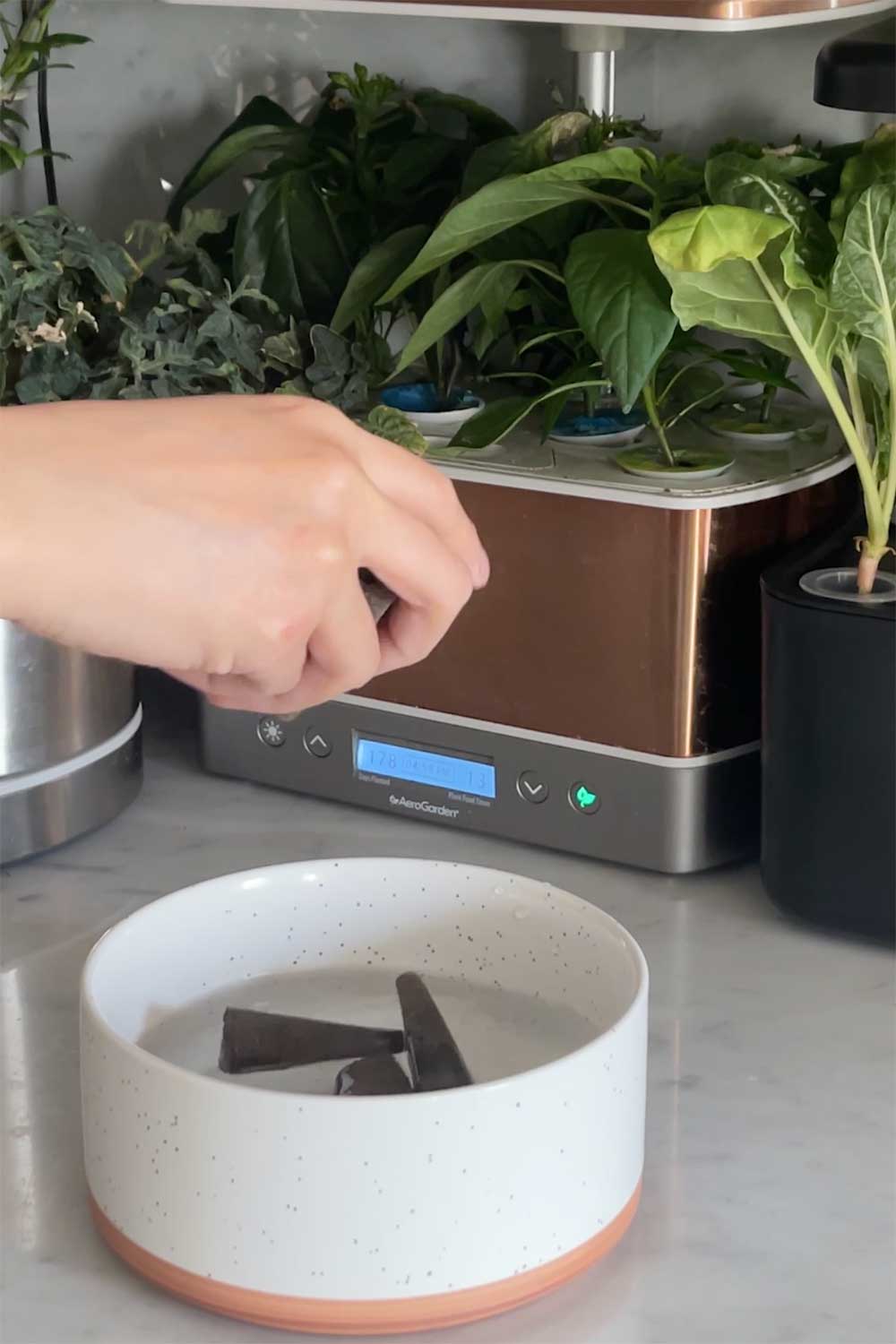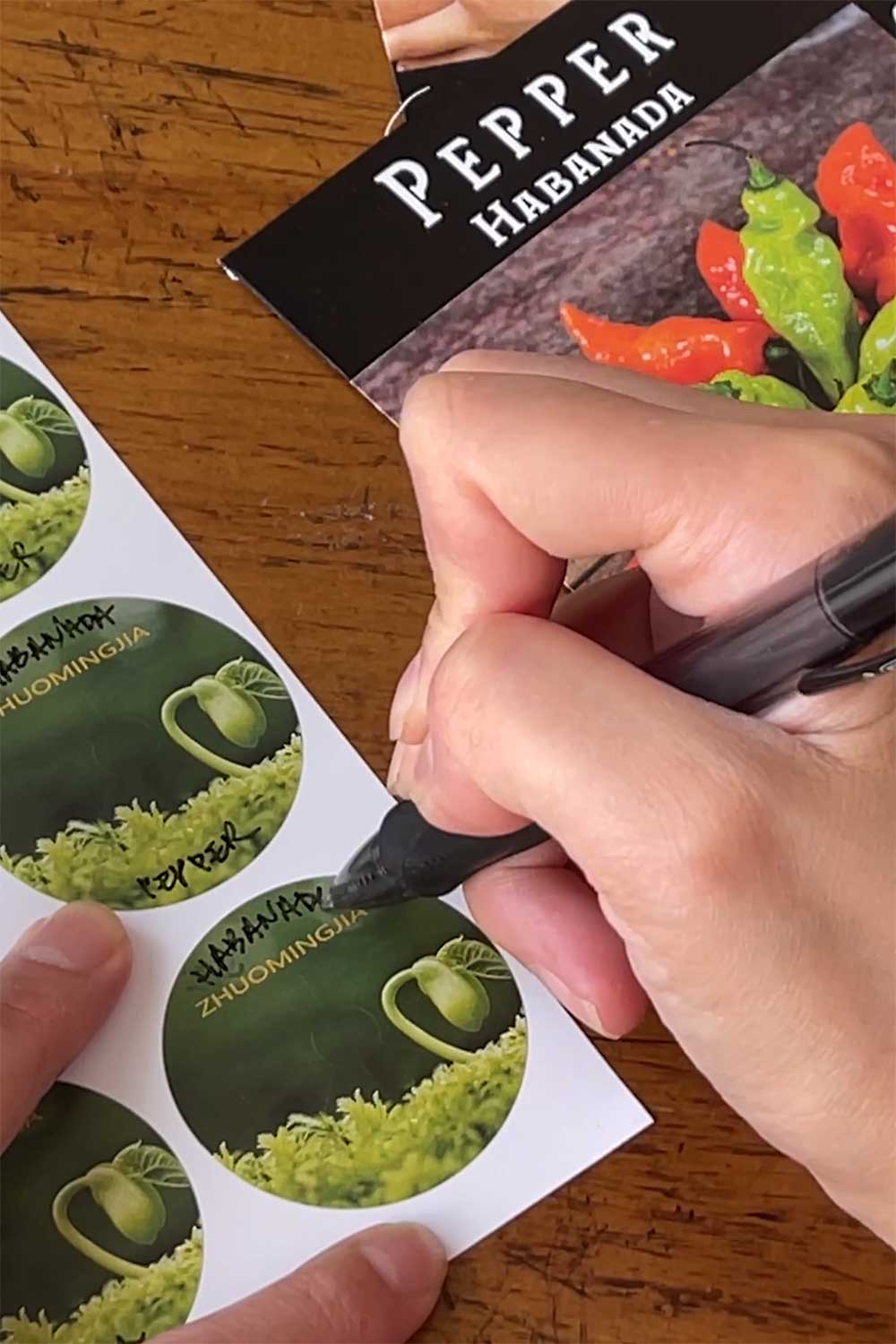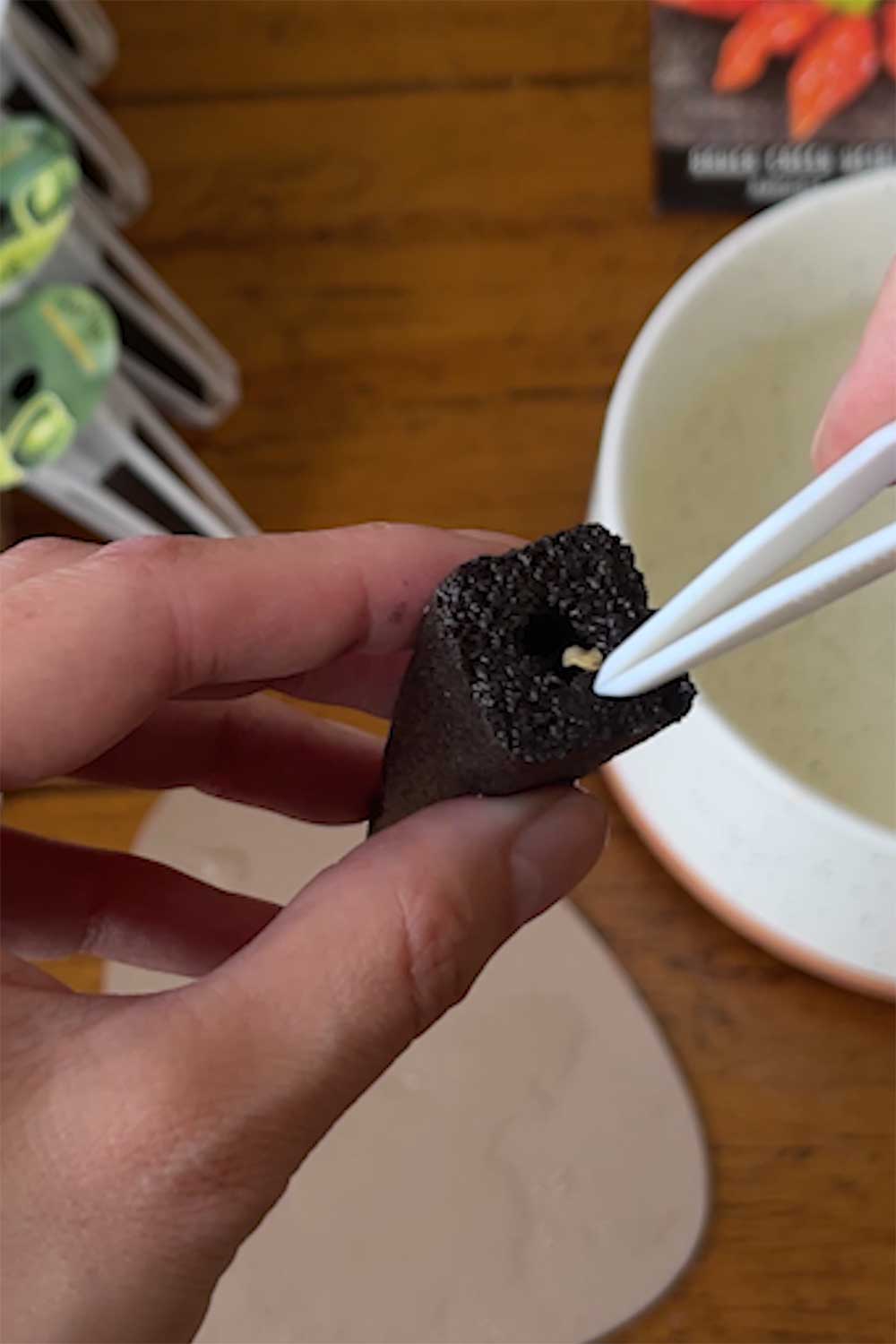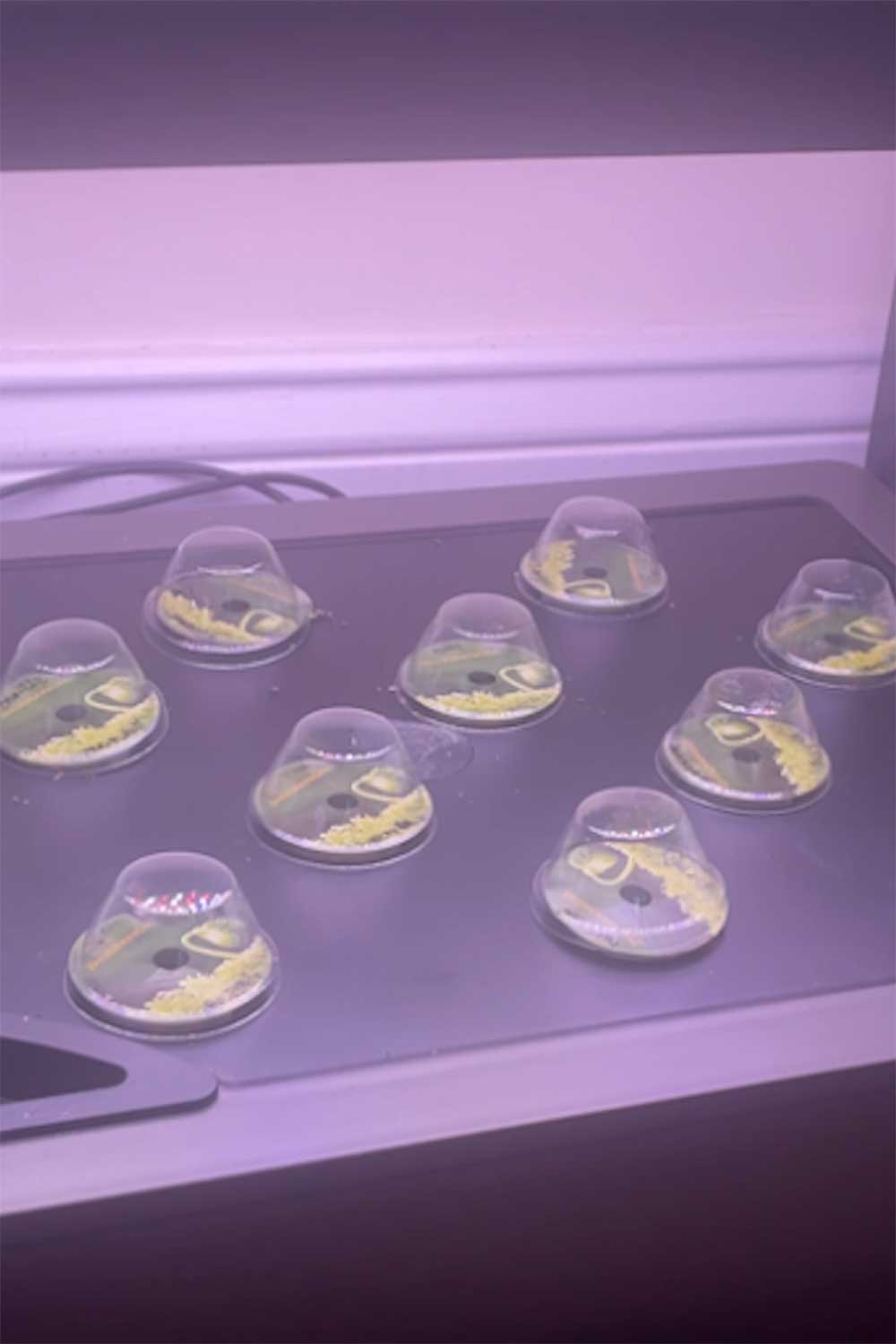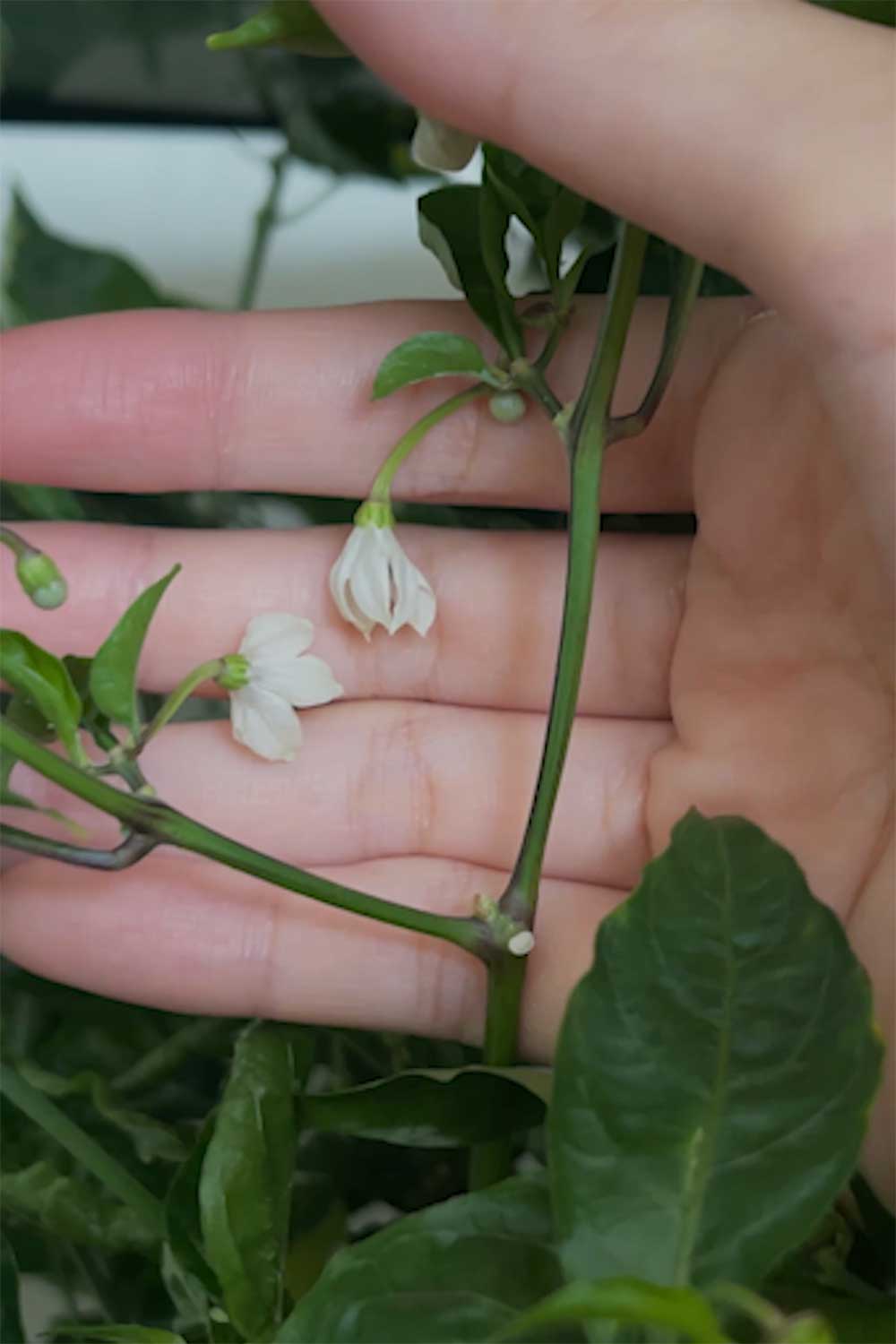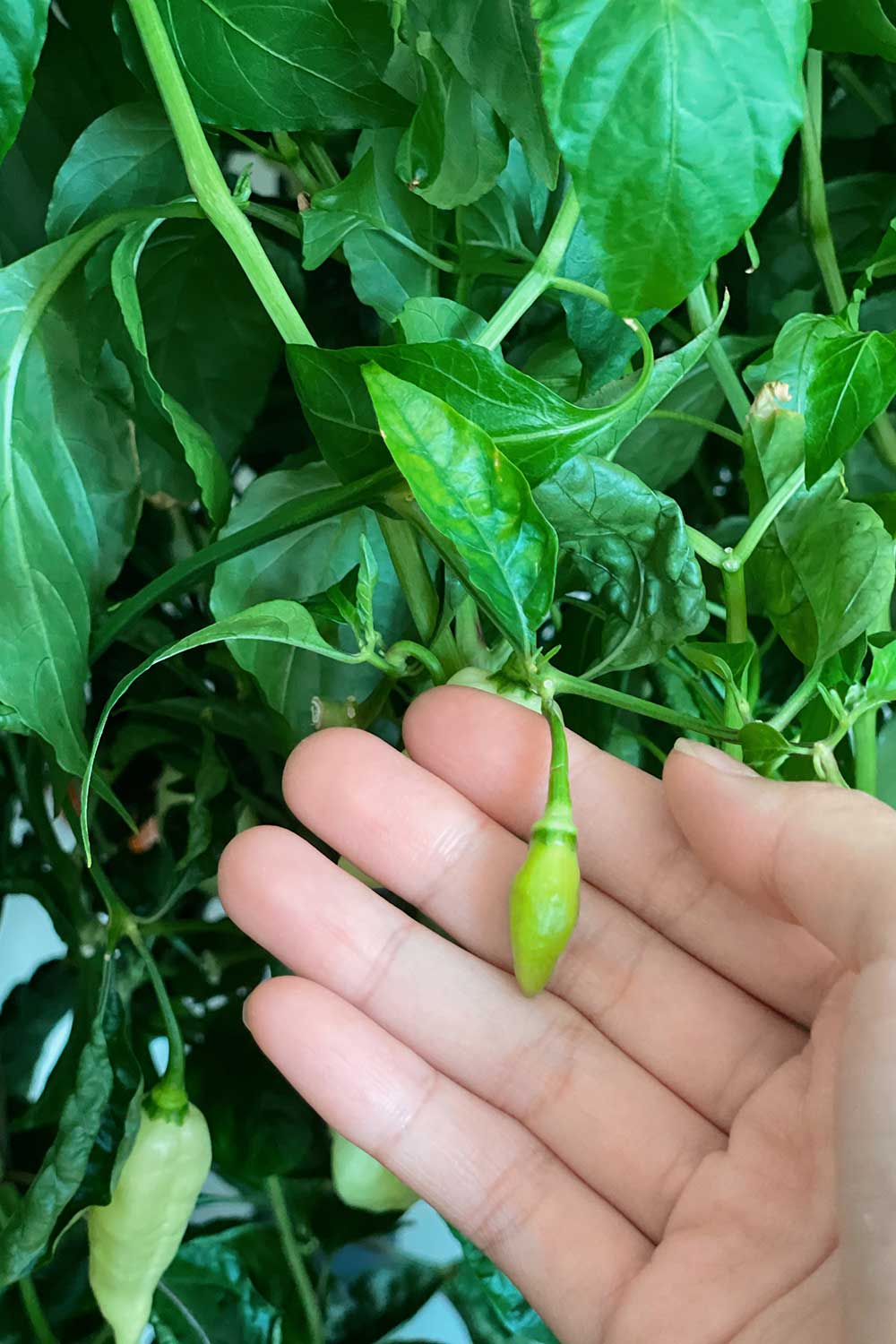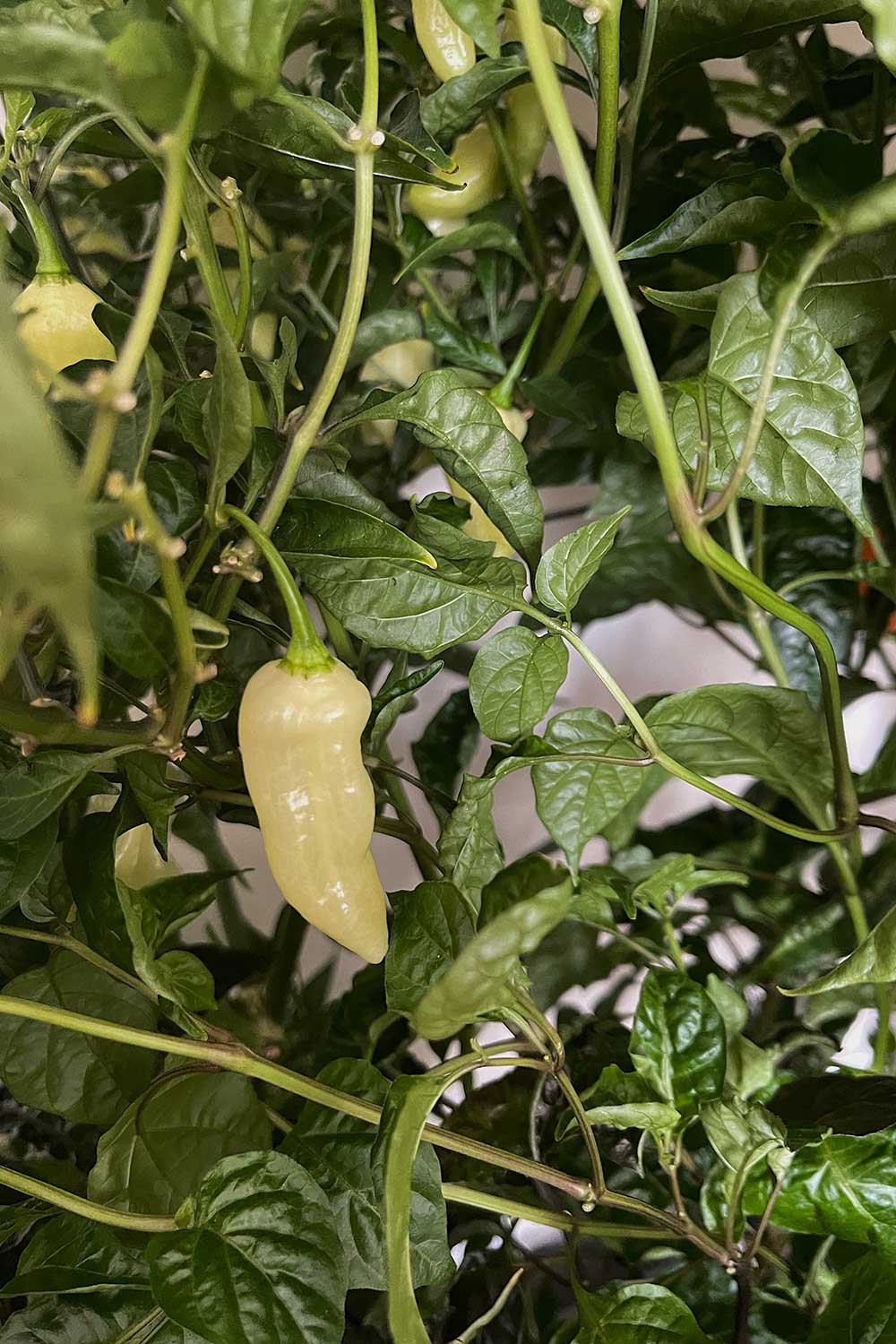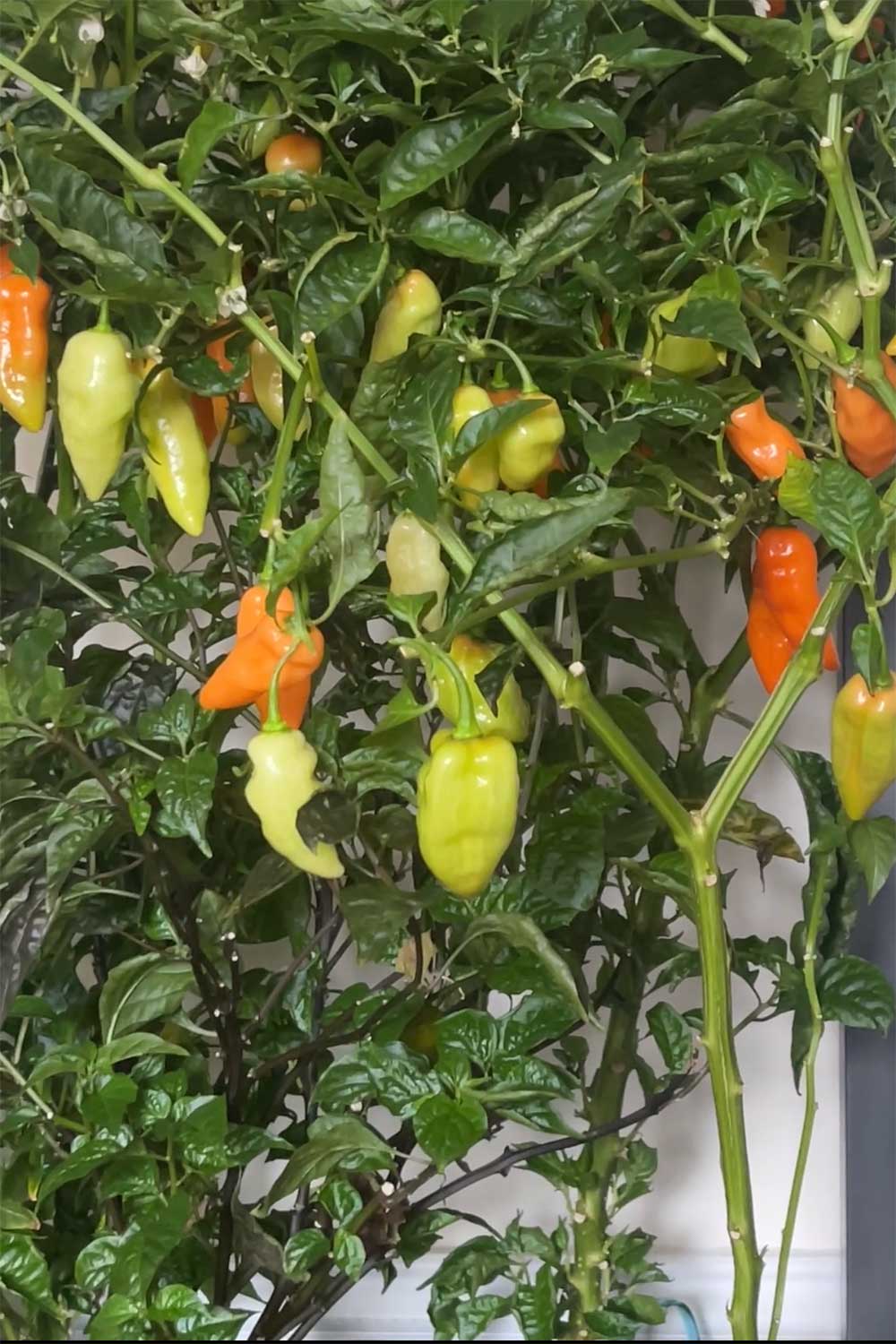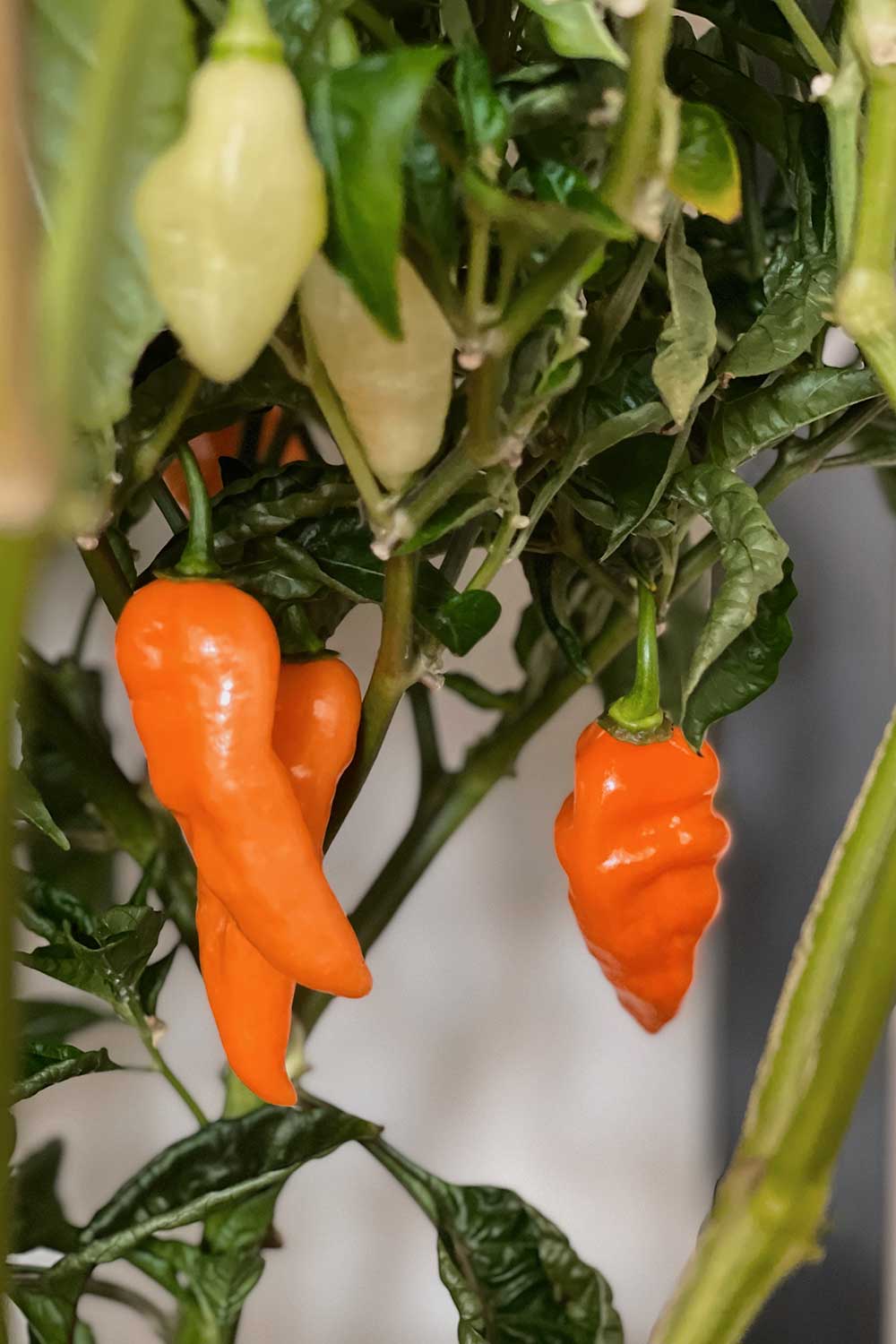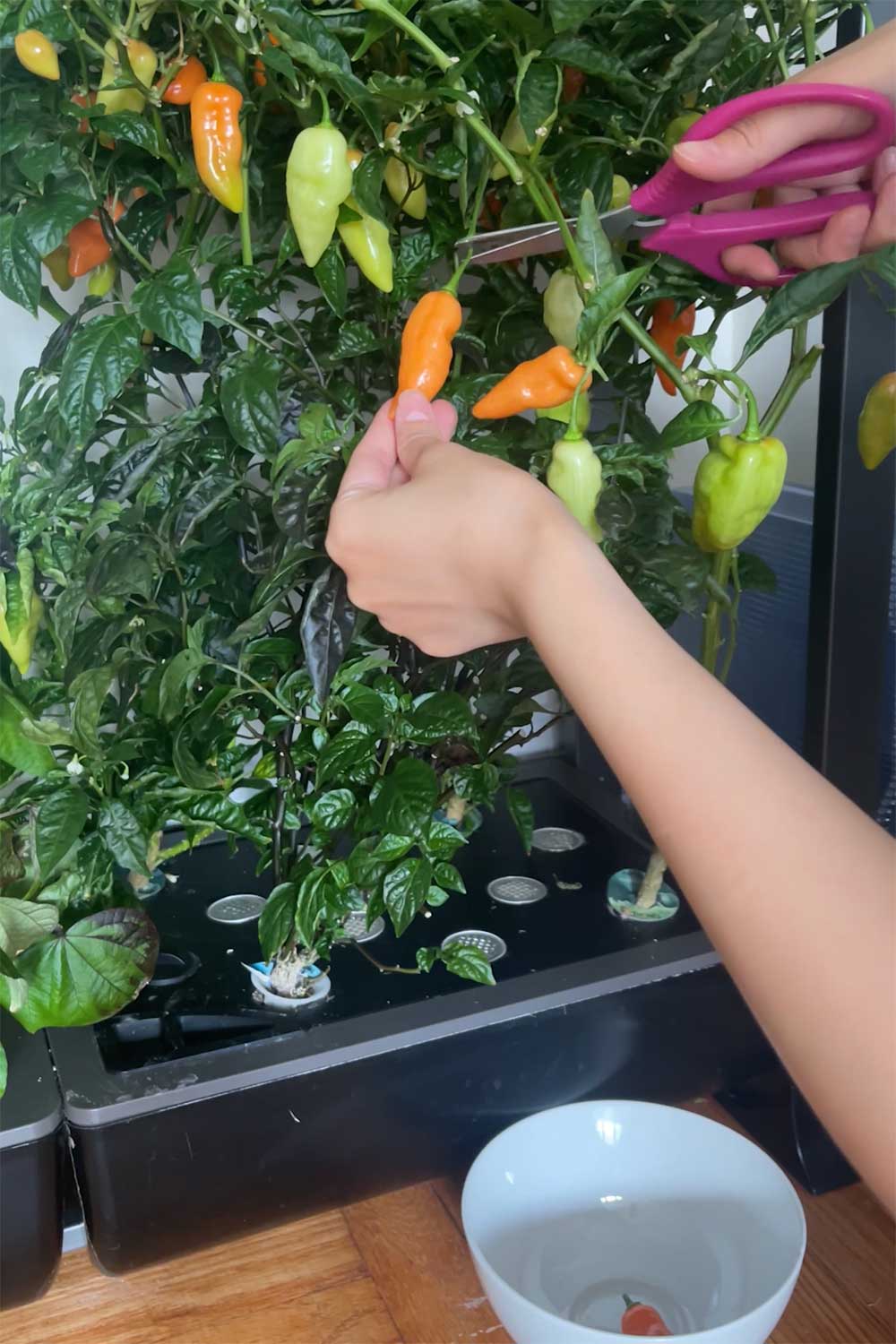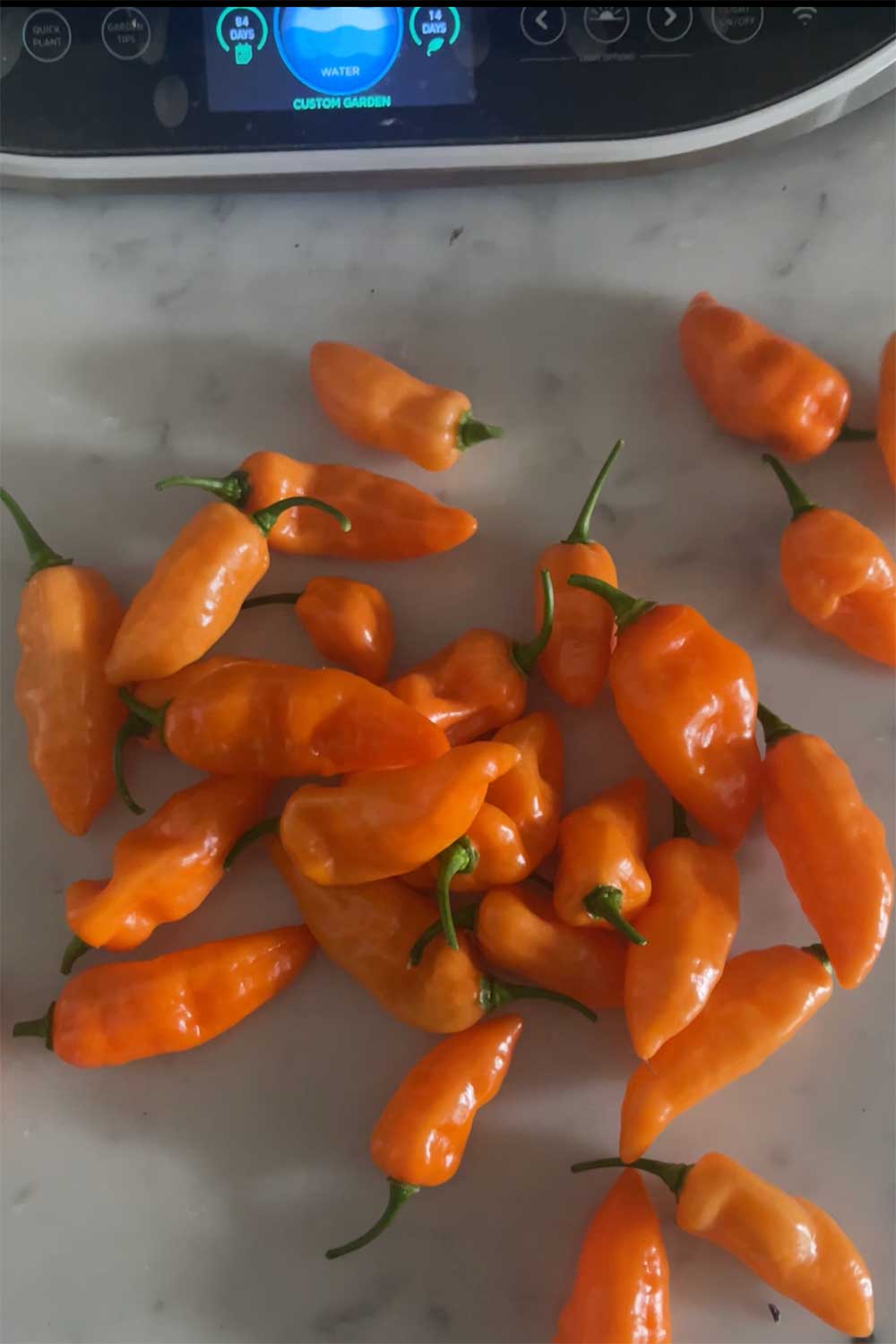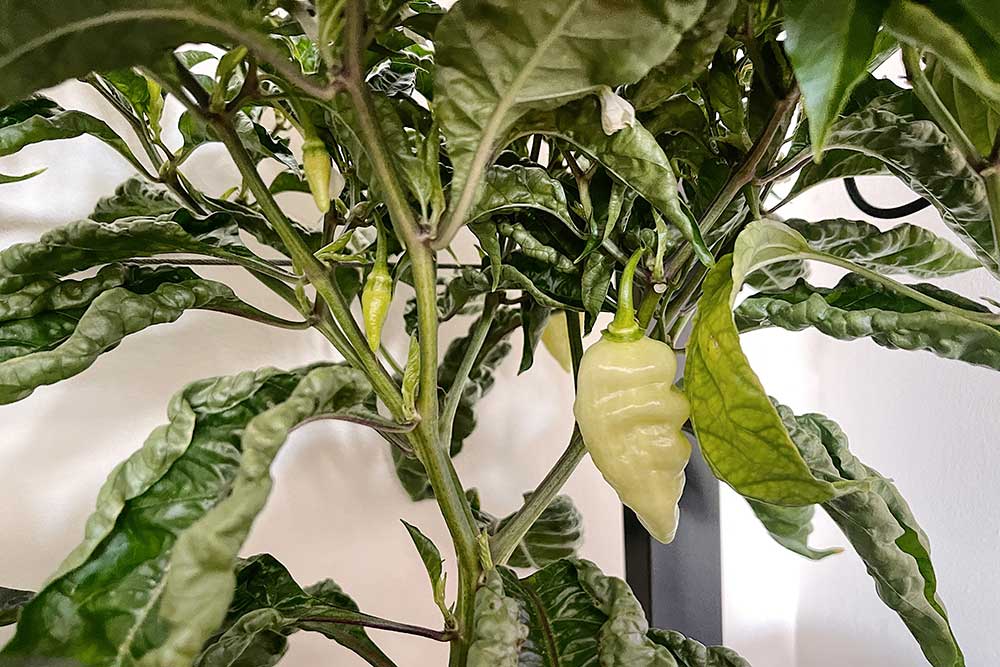
Habanada Peppers
There are two kinds of people in this world: those who add a dash of hot sauce / chili oil to everything… and those who can’t take the heat.
Personally, I like a bit of spice, to everything in life :)
But if you don’t…. I found the perfect pepper!
It has all the fruity, floral notes of a habanero without any of the heat.
Habanada peppers were bred specifically from habaneros to retain just the flavor, without any spice.
And what’s even more genius is they look identical to their ancestors – small to medium sized, bright orange with the deceptive ‘spicy’ ridges.
So you take a bite out of one, taste the melon-y, citrus flavor and never get any of the delayed spicy pain.
Their names actually speak to their design, haba – nada!
I recently grew my own habanada peppers inside my apartment and found them pretty doable!
Here’s everything you need to know about growing habanadas.
Planting Habanada Peppers
The first truly heatless habanero was developed by Professor Michael Mazourek of Cornell University.
It started when the University of New Mexico discovered a unique offshoot in their Habanero lines, where some of the orange peppers didn’t even register on the Scoville scale.
They sent some seeds to Professor Mazourek to study, knowing he was interested in peppers.
In addition to his academic work at Cornell, Professor Mazourek is a renowned plant breeder.
While most scientists focus on improving plants through increasing their productivity or resistance to disease, Professor Mazourek also has a knack for focusing on taste.
Previous varieties he created include the Silver Slicer Cucumber, a sweet white crunchy cuke, and the Honeynut Squash, a mini butternut known for its super sweet taste!
Professor Mazourek was intrigued by the idea of a heat-free habanero.
What if everyone got to enjoy spicy peppers, without suffering the burn?
Read more: How to Grow Shishito PeppersHe got to work, determined to create a delicious tasting sweet pepper with all the bright floral notes of a habanero.
Originally, it seemed promising as the heat gene in a pepper is easy to identify in the lab.
But the reality of plant breeding proved slightly trickier.
It took 13 generations of breeding and back-crossing to create a fully heatless pepper that retained the full flavor of its tropical original.
And luckily for us, the habanada was born!
I spotted the seeds in a catalogue from one of my favorite heirloom seed companies, but you can also purchase them on Amazon and Etsy!
Not many places sell habanadas so your best bet is to grow them yourself.
Habanada Grow Guide
| Botanical Name | Capsicum chinense habanada |
| Common Name | Habanada pepper, sweet habanero |
| Scoville Heat Units | 0 |
| Mature Size | 2-3 inches tall |
| Days to Harvest | 100 days from seed |
| Light | Full sun |
| Soil Type | Rich, well draining soil |
| Soil pH | Neutral (6.5 – 7.0) |
| Hardiness Zones | USA Zones 9-12 |
| Native Area | South America |
| Pests | aphids, spider mites, flea beetles |
| Diseases | blight, mildew, bacterial spot, mosaic virus |
Growing Habanada Peppers Hydroponically
I grow everything indoors, inside my small NYC apartment.
Because of that, I prefer to use hydroponic gardens.
They’re all-in-one systems that take care of the watering and lighting.
They also are cleaner, faster and more efficient – and less susceptible to bugs (let’s be honest, that’s the main draw).
Pepper plants are one of the slowest growing types of fruits, so I think they do particularly well in a hydroponic environment.
I used my Aerogarden Farm 24xl for this grow experiment.
In general, I find that larger fruiting plants like peppers tend to need more space, stronger LED lights and more height.
The 3 foot grow capacity of the Farm has worked best for me.
Best Indoor Gardening Products to Grow Habanada Peppers
Indoor Gardens
Use Your Own Seeds
Aerogarden Discount Code
Use SSG15 for 15% off any order of $50+
How to Grow Habanada Peppers
A video grow guide covering everything you need to know about growing these sweet peppers!
Starting Seeds
I direct sowed the habanada pepper seeds in my Aerogarden using some empty sponges and pods.
Some pepper varieties can be finicky to germinate, but the habanadas were straight forward!
I planted just 2, and the first sprouted within 8 days while the second took 10 days.
Habanada seeds need a warm environment to sprout, so if starting in winter, use a heat map to encourage germination.
And, if you’re planning to plant habanadas outdoors, you’ll want to sow your seeds at least 6-8 weeks before your last frost date.
Peppers take a long time to mature and in many zones, require starting indoors to ensure a mature harvest.
I direct sowed the habanada seeds in my Aerogarden Farm
Habanadas germinated within 12 days and the seedlings grew nicely.
By a month in, the plants had grown rapidly upright, forking off into a Y shape and producing a mini ‘tree’ look all on their own.
I didn’t prune these pepper plants, but have experimented with pruning in the past.
If I were to grow these again, I’d try topping them to see if I could get even more production!
Peppers need warmth to grow quickly, so they shouldn’t be transplanted outdoors until the threat of frost has past.
Space them 18″ apart and consider staking to provide support.
Compared to habaneros, the habanadas grow a little shorter and wider, maxing out around 3 to 4 feet tall.
The pepper pods also look slightly different from a standard habanero. They’re a little more elongated and curvy, and actually look more similar to a ghost pepper.
Nutrition
Every 2 weeks, I fed the habanada plants with hydroponic nutrients.
Lately I’ve been experimenting with these powder nutrients, which are more cost effective and easier to use in bulk.
If you find that your pepper plants produce tons of leaves and look bushy, but are struggling to set fruit, it’s likely due to the nutrition.
Try lowering the nitrogen levels and using an extra bloom fertilizer with phosphorus to help increase flower production.
L to R: at germination, the fruiting stage, and the baby habanadas forming!
Pollination
Habanada peppers produce tiny white flowers.
These didn’t open up very much, and initially the plants struggled to set fruit, so I resorted to manual pollination.
Because the flowers were so small, with a narrow opening, I found them tricky to pollinate by hand.
Instead, a vibrating wand like this one was much easier.
I recommend using a brush and gently letting the vibrating waves hit the outside back of the flower, where the white flowers meet the stem.
The vibration will help the pollen mingle inside, without damaging the flower itself.
Every couple days, I’d check on the plants and tap all the tiny white flowers with the brush. A couple weeks later, I had tons of pepper fruit starting to form!
In total, it takes roughly 80-100 days to harvest habanadas when growing from seed.
What seemed to take the longest was waiting for the peppers to change colors!
habanadas start lime green and gradually turn yellow, then mature to tangerine orange
How to Harvest Habanada Peppers
Habanada peppers start out nearly translucent in color.
The tiny lightbulb shaped peppers gradually get bigger and darken, transitioning from neon yellow-green to yellow-orange and eventually maturing to a deep vivid tangerine.
Along the way, their shape gets larger, to about 2 inches in size, with distinct ridges in the flesh.
From their translucent white-green stage, it takes a while for the habanadas to mature.
The color will slowly solidify to green, yellow and eventually orange.
The habanadas taste best when they’re a deep, tangerine-y orange.
How to Store Habanada Peppers
I ended up getting so many peppers from just two habanada plants.
I was actually pretty amazed by the production.
Growing peppers indoors is one of the trickier types of vegetables and I’ve often struggled to get meaningful quantities of peppers.
But the habanada surpassed all my expectations!
I easily got 50+ peppers from each plant, and harvesting only encouraged the plant to produce more.
I had so many habanadas I didn’t know what to do with them all. I ended up saving extras in my freezer, in large quart bags.
What Do Habanadas Taste Like?
Habanada peppers have the bright, tangy citrus flavor of a habanero without any of the lingering heat.
So you get to experience the complex flavor of a traditional tropical habanero, without the painful burn!
Make sure to wait for the peppers to fully mature.
They don’t taste very floral or complex in their immature yellow / green stage.
harvesting a ton of habanadas!
more hydroponics + recipes on tiktok @shershegrows
How Hot are Habanada Peppers?
Habanada peppers are aromatic and totally mild, without any spice.
They look fire-y, but have a delicious fruity flavor without any burn.
In fact, you could probably trick someone to thinking you were superhuman and downing a regular ghost pepper (150,000+ SHUs) like candy by eating these!
If you have any friends that don’t like spice, they’ll appreciate habanadas.
How to Cook with Habanadas
The peppers are thin walled, sweet with a light citrus taste.
So far, I’ve used them in soups, salsas and even tried deep frying them in light tempura batter.
I think they work best in their raw form – you could slice them and add to a ceviche or summer salad, or on a veggie platter with some dip.
I also plan to pickle them, although I’m not sure how they’ll turn out since these have thinner walls than most traditional pickling pepper varieties.
I was shocked by how many habanadas I was able to harvest!
Habanada Pepper Recipes
coming soon!
Follow me on
